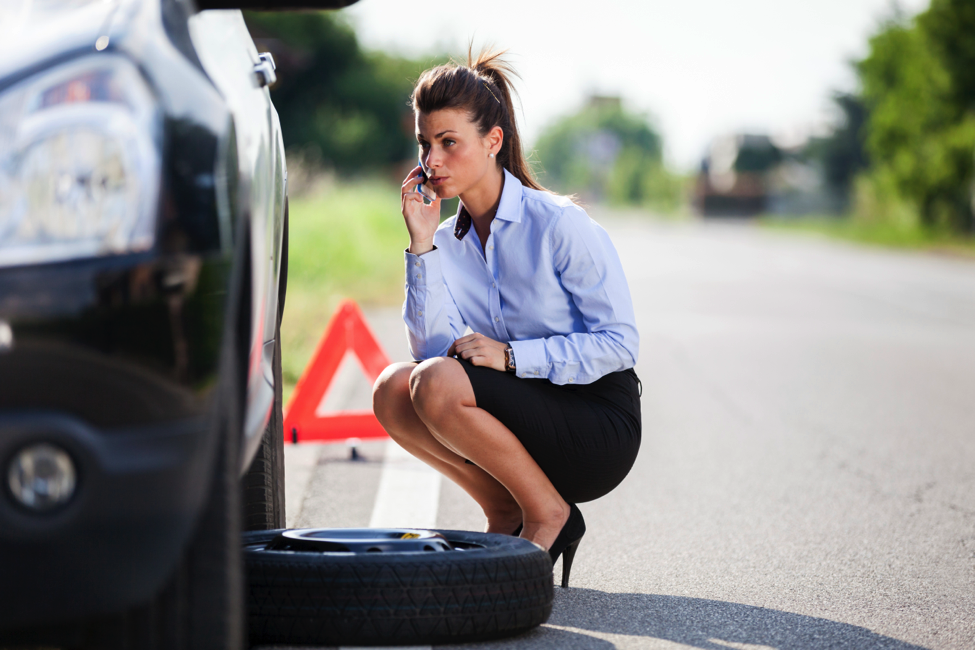
You’re cruising down a crowded San Diego highway at 65 mph when all of a sudden, you’re startled by a short, loud burst: your tire has just blown out. It’s natural to panic and to follow your intuition to get your car off the road. However, there are a few basic measures you need to take after you hear one of your tires burst, and you’d probably be surprised by some of the steps. Let’s walk through this process to see how you can best manage this unfortunate occurrence.
1. Hit the Gas!
This is the first and most counterintuitive part of the process. Once you hear that devastating blowout noise, instinct will likely tell you either to hit the brakes or to start steering toward the shoulder. Instead, accelerate for just a second or two. Believe it or not, pressing your accelerator will stabilize your vehicle, forcing it to ride straight and giving you greater control behind the wheel. This will prepare your vehicle for later maneuvering. Speeding up seems like the last thing you’d want to do, right? Don’t fear: blown tires actually impede your car from accelerating, such that only a select few vehicles, can even maintain their speed when you hit the gas following a tire blowout. The accelerator works only as a stabilizer in this context—press it to stay in control.
2. Drive Straight and Don’t Brake
Once you hit the gas, keep driving straight as you allow your vehicle to slow down. Again, it’s tempting to start steering out of the flow of traffic. However, once your tire has been blown, your vehicle should be brought down to about 30 mph before you even slightly start turning the wheel. You’ll also probably be tempted to pump the brake, but don’t do this either—this reaction has been shown to be hazardous, as it may make it more difficult for you to maintain control of your vehicle. Instead, let your car slow down naturally.
3. Now, Finally, You Can Steer
Once you’ve decelerated to a much lower speed, you can start pulling off to the side of the road. If you’re in the left lane of a highway, it will obviously be trickier to pull across lanes to the right-hand shoulder. Put on your signal and steer the car very, very gently toward the roadside. Since you’ll be moving slowly, make sure there’s plenty of room between you and oncoming cars. Get to the shoulder safely and call for help.
Regular tire pressure checks are the best way to prevent a tire blowout, so be sure to purchase a tire pressure gauge and learn how to check your tire pressure. On the other hand, if you’ve recently had a blowout and are in need of new tires, you can drop by Evans Tire to take advantage of promotions like our Buy 1 Get 1 or Buy 2 Get 2 tires deals, both of which offer lifetime tire replacements in case of blowouts or other disasters.
Blown tires aren’t fun for anyone, but they also aren’t as frightening as you might think. Stay calm behind the wheel and follow these basic steps to ensure safety for you and your passengers.
